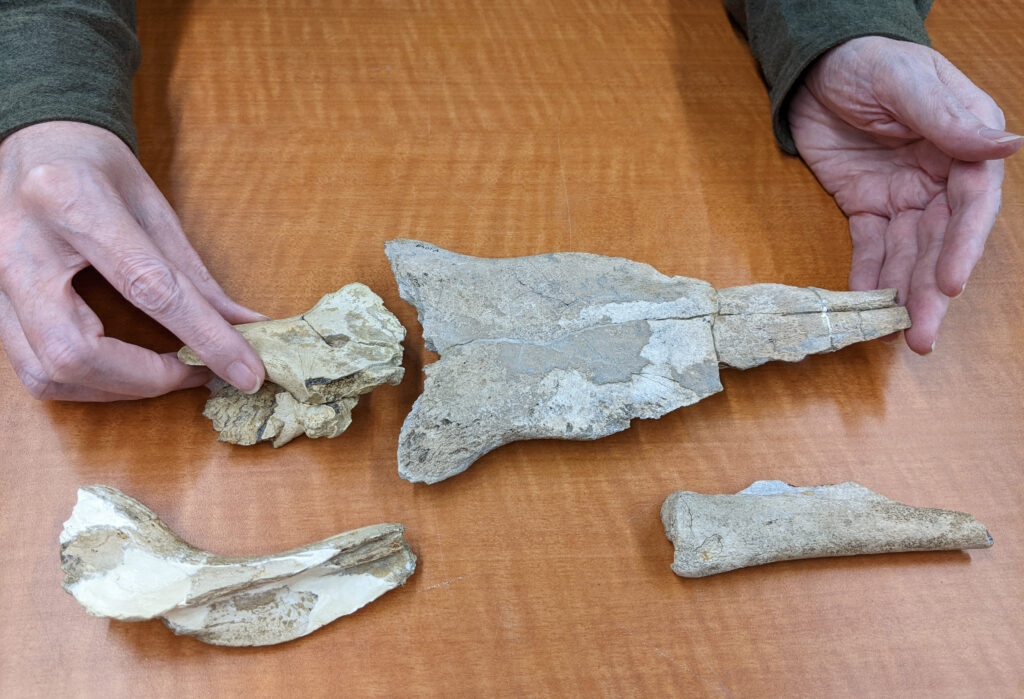
Alabama is a global hotspot for mosasaurs. These extinct relatives of lizards were the top predators in the oceans during the late part of the Cretaceous Period.
Species varied in sized up to ~50 ft (~17 m) long and swam in central and south Alabama.
From the Harrell Station area including Harrell Station Paleontological Site alone, as many as seven mosasaur species are known. There are, however, additional mosasaur species from the same Mooreville Chalk rock unit.
Earlier this month, UA Museums’ Research Associate of Vertebrate Paleontology Caitlín R. Kiernan described a new mosasaur species. The single specimen (ALMNH:Paleo:5452) lived ~82 million years ago and was found in the Mooreville Chalk of Greene County, Alabama. Kiernan recognized that this specimen could be a new species in 2002, and borrowed the specimen from the Alabama Museum of Natural History paleontology collection in 2021 for further research. The new species is named Ectenosaurus shannoni, honoring Samuel Shannon who co-discovered the specimen in November 1976 during his time as a graduate student at the University of Alabama.

The specimen consists of parts of the skull and 27 vertebrae. Key parts of the skull were sufficiently preserved to distinguish the species from the other three species within the genus Ectenosaurus. Important skull bones include the frontal, parietal, quadrate, splenial, and coronoid. This specimen is only the ninth specimen known from this genus worldwide, all found in North America.
Kiernan returned the specimen on 15 November 2023. Subsequently, Dr. Adiel Klompmaker, UA Museums’ Curator of Paleontology, put the specimen in the type specimen room of the ALMNH collection. The new holotype has now joined the other two mosasaur holotypes: Selmasaurus russelli, previously described by Kiernan, and Clidastes moorevillensis.
The very large and growing mosasaur collection of ALMNH keeps attracting attention. Kiernan continues to study mosasaurs from the collection, and last month a new exhibit on a mosasaur skull was unveiled during Alabama’s National Fossil Day celebration.
Reference:
Kiernan, C.R. and J.A. Ebersole. 2023. Two new plioplatecarpine mosasaurs (Mosasauridae; Plioplatecarpinae) of the genus Ectenosaurus from the Upper Cretaceous of North America. PaleoBios 40(13): 1–28. https://doi.org/10.5070/P9401362375